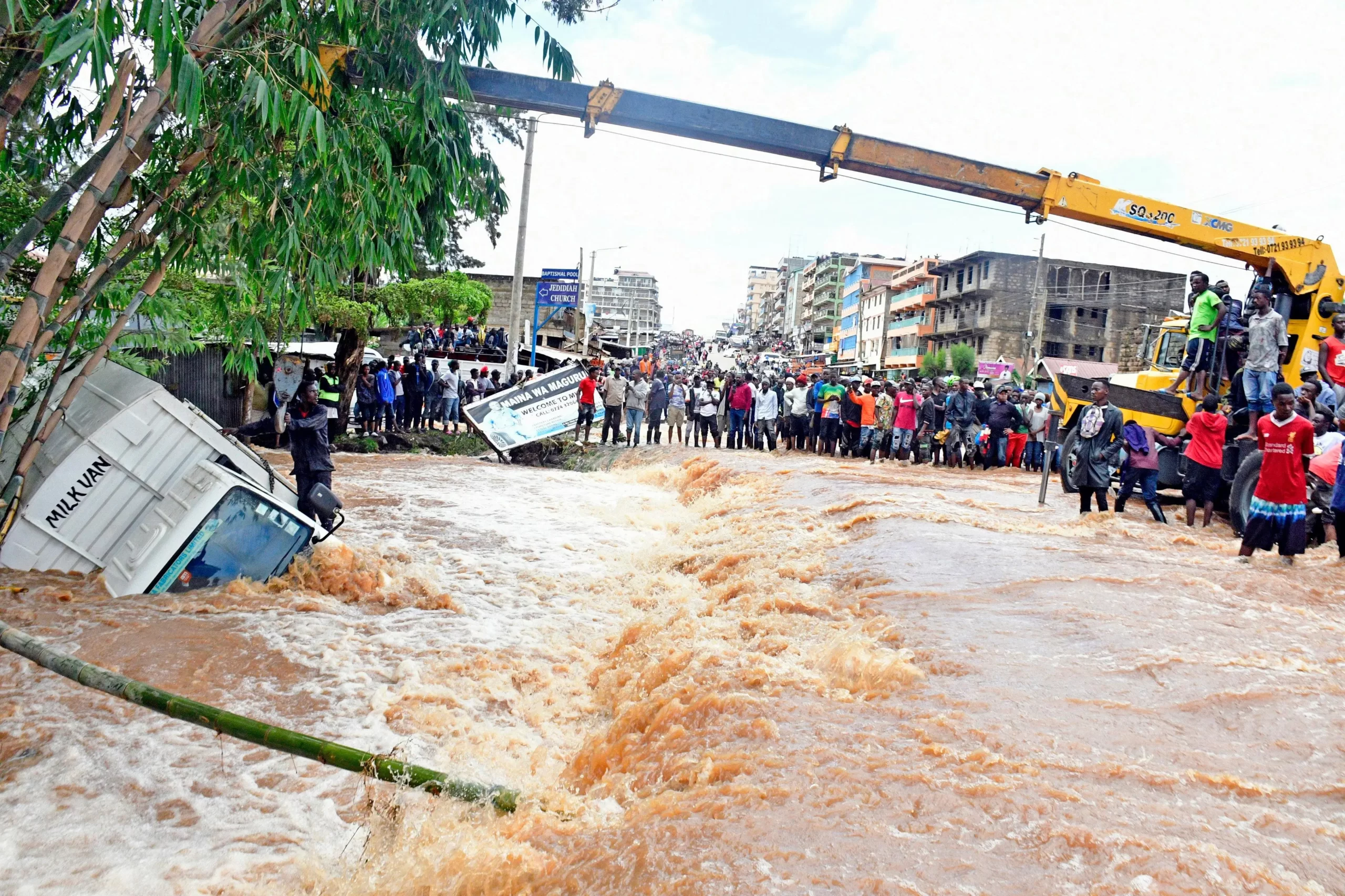
Floods cause devastation and tragedy in their wake, and experts predict a coming food scarcity
East Africa has seen terrible flooding over the last two weeks, resulting in thousands of people being displaced, hundreds of lives lost, and significant property damage. According to a spot check by The EastAfrican, roads and railroads have been temporarily closed in Kenya, Uganda, Tanzania, and Burundi, which have been the worst affected by the storms.
Experts caution that the impact of the floods may cause Tanzania, one of the region’s food suppliers, to experience yield reductions of up to 30%.
According to government spokesperson Mobhare Matinyi, 76,698 hectares of agriculture have been devastated and 8,532 dwellings have been damaged in the Morogoro and Coast areas.
Flooding has damaged over 10,000 homes, affected over 200,000 people, and resulted in at least 236 injuries, according to the country’s prime minister, Kassim Majaliwa, who addressed parliament.
“Adverse effects have been caused by the heavy El Nino rains, strong winds, flooding, and landslides in various parts of the country,” Mr. Majaliwa stated.
The Athi River overflowed its banks, inundating a significant portion of the residential and industrial districts in Kajiado and Machakos counties, forcing the closure of the Nairobi-Namanga route for the most of Wednesday.
Athi River marooned 96 individuals who were rescued by the Red Cross and other volunteers.
At the Tanzanian Council of Ministers sessions, the topic is being discussed.
Kenya’s EAC Cabinet Secretary, Peninah Malonza, stated that the East African Community ministers will meet to discuss flood management strategies. Malonza is in Arusha to discuss the EAC budget for the financial year 2024–2025. “Flooding caused by the Athi River led to the temporary closure of the Namanga road,” Malonza said.
“We want to meet about this problem when we travel to Arusha and then Dar es Salaam.”
An advisory for heavy rainfall was released by the Kenya Meteorological Department.
Flash floods in Uganda impeded travel along the Northern Corridor.
Floods earlier this week blocked the Masaka-Mbarara highway, which is also Uganda’s principal trade route to Rwanda and the Democratic Republic of the Congo, impeding trade and transit.
A kilometer or two outside of the city, a portion of the Kampala-Masaka highway between Busega and Kyengera collapsed on Sunday, according to Allan Ssempebwa, a spokesman for the Uganda National Roads Authority (UNRA).
“The drainage systems at that section of the highway have collapsed, causing a failure. In order to act as soon as possible, we are now mobilizing supplies and other equipment, according to Mr. Ssempebwa.
Since it serves as the primary commerce route between Uganda and Rwanda and the Democratic Republic of the Congo, the Masaka-Mbarara highway is vital to Uganda’s economy.
With an estimated 30,000+ vehicles using the route every day on average, it is one of the busiest in the nation.
Additionally, a large portion of Kampala’s food supply comes from the southwest region of Uganda. Many vendors lost a great deal of money and became stuck on the road as a result of their food, particularly bananas, spoiling before they could be sold. Cars threaded their way over the small, uneven, and rocky marram roads in order to enter or exit Kampala.
“We have assembled an emergency response team that is currently always on standby to respond to flooding across the nation because we know that anything can happen during this rainy season,” Mr. Ssempebwa stated.
The nation would see above-average rainfall in April, according to the Uganda National Meteorological Authority.
This week, floods forced traders to close their stores in the Industrial Area, leaving them to tally their losses. Meanwhile, the Kyambogo-Banda route was also closed.
The nation would continue to see additional rain, according to the National Meteorological Authority, which also warned that flooding was a possibility in the country’s north.
Thundershowers are happening in isolated areas of the nation. A few areas, including the West Nile, the Midwest, the center North, Kyoga, and Kigezi, will continue to see sunny spells. “Watch out for flooding in the lowlands in the north,” the Authority stated on X.
On Wednesday of this week, the Tanzanian authorities declared the deaths of sixty-three individuals. Because of the possibility of floods and the disruption of important economic activities like fishing and maritime transportation, coastal areas are especially vulnerable. Ladislaus Chang’a, the acting director-general of the organization, listed high-risk areas as Pemba and Zanzibar, as well as Dar es Salaam, Tanga, Morogoro, Mtwara, and Lindi, including Mafia Island. Mwanza, Masra, Simiyu, Kagera, Kigoma, and Shinyanga are the others.
Thousands of people who lived in valleys and by large rivers in the Rufiji River Basin were evicted. In Arusha and Manyara, the rains have triggered landslides that have damaged roads and homes.
Roads like Mkwajuni in the Kinondono area and Morogoro Road near Jangwani were temporarily closed in Dar es Salaam.
In order to house 1,529 flood survivors, eight camps have been set up in the Coast region, and one in Morogoro.
For the individuals living in the camps, the government has supplied 40,000 tons of food items, including rice and maize, as well as $83,588 worth of medications and medical supplies.
Rising waves from Lake Tanganyika reached the port of Bujumbura in Burundi, interrupting commerce and making it impossible for people and commodities to move around. Kenya’s coast, Nairobi, Central, Western Highlands, Rift Valley, Lake Victoria Basin, Southeastern lowlands, and Northeastern area have all been severely impacted by the heavy rains.
The Kanyosha River overflowed due to Lake Tanganyika’s rising waters, causing damage to Bujumbura’s residences and other property. Martin Niteretse, the interior minister of Burundi, requested assistance in handling the situation.
“We request that our development partners work in tandem with the Burundian government to provide aid to all those impacted by these calamities,” Mr. Niteretse stated.
As the neighboring country of Rwanda prepared for flooding, 4,800 residents from 326 catastrophe high-risk zones were relocated to safer areas.
The authorities are not taking any chances, even if there have been no reports of significant flooding thus far. This is especially because memories of the over 130 people who died a year ago are still fresh.
“We notified the residents in disaster hotspot areas in advance, and over 4,800 families were relocated from these areas from 326 designated disaster high-risk zones,” stated Adalbert Rukebanuka, the Ministry of Emergency Management’s director-general for risk reduction, planning, and mainstreaming.
The official stated, “We think the worst is yet to come. At the moment, we haven’t had many cases of disaster-induced deaths or destruction, but we are receiving few reports in different parts of the country.”
All Categories
Recent Posts
Tags
+13162306000
zoneyetu@yahoo.com



